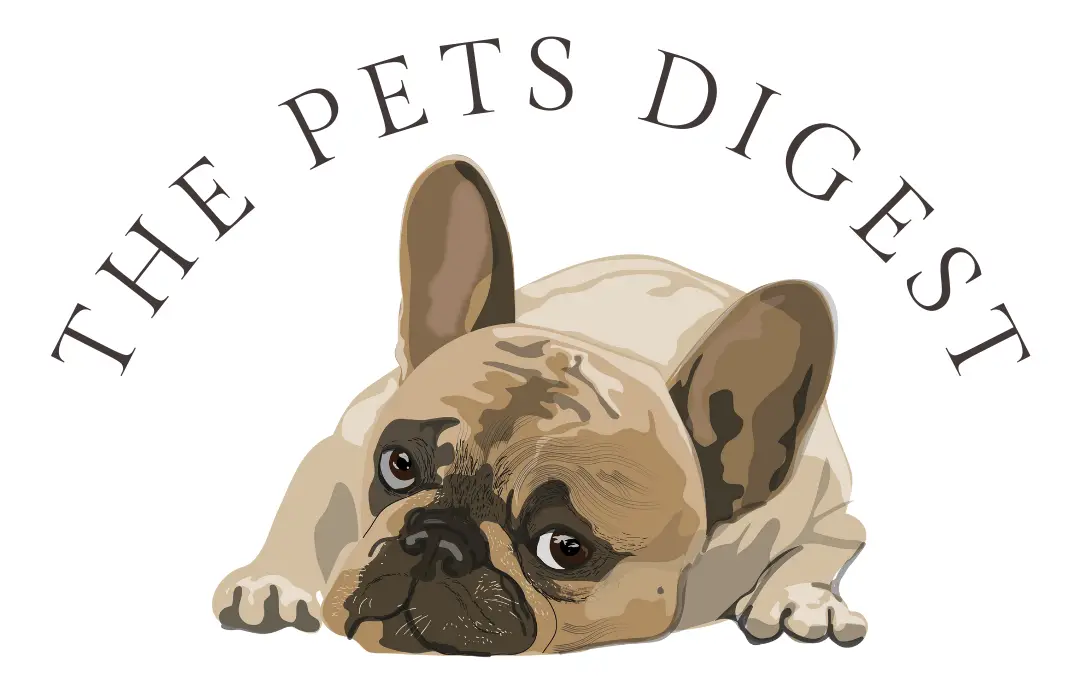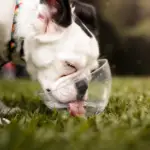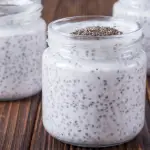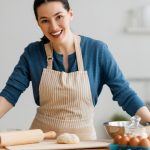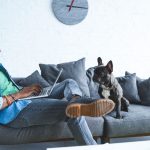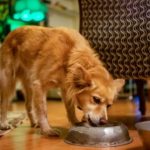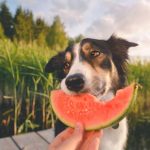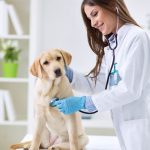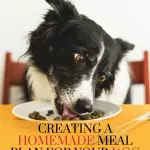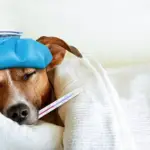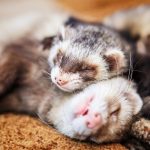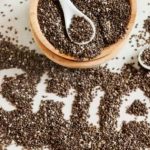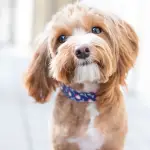Updated 9/2023
As a veterinarian with a dog that has pancreatitis, I understand the need to know how to properly comfort your dog with pancreatitis.
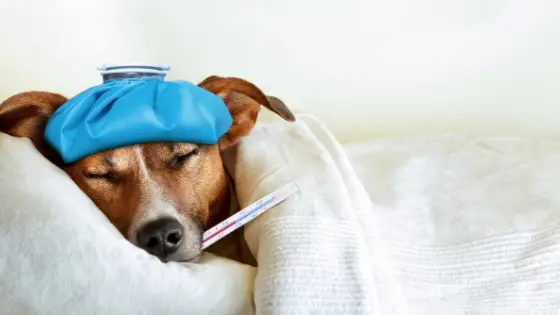
The main four goals of comforting your dog with pancreatitis are:
- replacing fluid losses
- maintaining hydrostatic pressure
- controlling nausea
- providing pain relief
Keep reading for 10 easy tips to keeping your dog comfortable if they have pancreatitis.
Some aspects of treating and comforting a dog with pancreatitis have to do with the type of pancreatitis they present with.
There are two types of pancreatitis acute and chronic, many times your action plan will depend on which type your pup presents with. Both types can cause a lot of pain and if not treated can be life-threatening. Let’s look at the major differences between the two
Acute Pancreatitis
- Symptoms come on suddenly, read this article to learn more about the symptoms of pancreatitis in dogs
- No signs of pancreatitis before
Chronic Pancreatitis
- A dog that has suffered from pancreatitis in the past
- The condition develops over time
- Dogs can have repeated bouts of pancreatitis or flare-ups
- You may have to feed a low-fat diet for life or an extended period of time
If your dog has an acute case of pancreatitis and this is the first episode you will want to get them to the veterinarian as soon as possible so they can get the necessary treatment. The veterinarian will provide intravenous fluids, anti-emetics to help them with any vomiting, and round-the-clock observation.
If your pup has chronic pancreatitis and is having a flareup episode I would highly recommend contacting your veterinarian to see if they recommend bringing them into the veterinary clinic.
Many times vets will want you to come in for blood work and possible overnight monitoring with fluids. Once you have your pup home make sure you follow these tips if you are wondering how to comfort a dog with pancreatitis.
While most pet owners are aware that they should feed their dog with severe pancreatitis a low-fat diet, pain medication for abdominal pain, and possibly digestive enzymes. There are some other things you can do to help your dog.

10 simple Ways to Comfort Your Dog with Pancreatitis
1. Don’t withhold food
While it was once thought that dogs should go without food for at least 24 hours after an episode of pancreatitis this is no longer regularly practiced.
The thought of not giving food for 24 hours was to rest the pancreas, however, new research suggests that dogs who begin to eat earlier have better recovery rates and long-term outcomes.
Feed your dog when they are ready to start eating again and no longer vomiting.
2. Feed Less But More Often
Once your pup is able to eat again you want to feed smaller, more frequent meals instead of one to two large ones. This should look like 4-6 small meals throughout the day. This may be something you want to do long-term as well.
3. Feed Low-Fat meals
Once your pup does start to eat again, no matter how sad your pup looks or how much they beg do not feed them any table scraps or high-fat food.
Instead of feeding human food or high-fat foods, opt for a very bland diet. Choosing an easily digestible food is much easier on their stomachs. To read more about how to make a bland diet and how much to feed read this article.
Aim for 8%-10% fat or less. Many times if your pup has chronic pancreatitis your veterinarian will place your dog on a prescription diet or a low-fat weight-loss diet. While prescription diets usually cost substantially more, they are many times what will save your pet’s life.
4. Pamper them
Make sure your pup has somewhere quiet and comfortable to rest.
This also means if you have little ones in the house or other pets keep them separated as much as possible so that they can rest
They may be in some pain and unable to walk long distances so bring their bowls closer to them and if necessary (and if possible) carry them outside to use the bathroom.
5. Watch Their Stomachs
Do not place any undue pressure on your pup’s abdomen when carrying him or her or picking them up.
If you can, refrain from picking your pup up while they are going through an episode if it means touching their stomachs.
Many times dogs that have pancreatitis also have extremely sore abdomens. If you have to pick them up use a towel or the bed they are lying on to do so.
6. Use Puppy Pads
While not often, if my pup has flare-ups of his chronic pancreatitis it almost always comes with accidents, usually diarrhea. Although your pup may be a potty-trained adult, at this time they may have some accidents.
Have a puppy pad somewhere in close proximity for them to go to if need be. Never chastise them for doing so in the house, they simply can’t help it
7. Monitor for worsening symptoms
Keep a close eye on your pup if your veterinarian doesn’t recommend hospitalization.
Dogs with chronic pancreatitis often have lethargy, poor appetite, and diarrhea. B
y keeping a close eye on your pup you can make sure to get your pup to the vet as soon as possible. Mild cases usually resolve within 48 hours
- Check the gums: to ensure they remain pink, If they are pale or white get your pup to the veterinarian immediately
- Unresolved clinical signs: If the signs fail to resolve within 48 hours such as vomiting and lack of appetite call your vet
- Blood in stool: While it is fairly common to see blood in the stool, you may want to call your vet if bloody diarrhea begins
8. Have water readily available
While your veterinarian may recommend not feeding for 8-12 hours you should still make sure your dog has water readily available.
You may want to include a capful of clear Pedialyte meant for babies in their water as well if your vet approves.
Many times dogs do now want to eat or drink when they feel ill and can suffer from severe dehydration, so it is important to have water on hand and know the signs of dehydration in dogs as they may also need fluid therapy from your veterinarian.
Some signs of dehydration in dogs include
- Panting
- Sunken eyes
- An abnormal skin tent
- Lethargy
- Dry nose
9. Use medication from your veterinarian
Your vet will be able to give you medications for pain, and vomiting which will most likely be necessary.
Your pup may also have to spend some time at the vet clinic getting IV fluids, so bringing a bag of his or her things to remind them of being at home will probably be very comforting as well.
My recommendation is to put together an emergency kit for cases when your pup has a flare-up, that way you will have everything you need, like antiemetics on hand from your vet. I created a list of thing things you may want to have which you can download here.
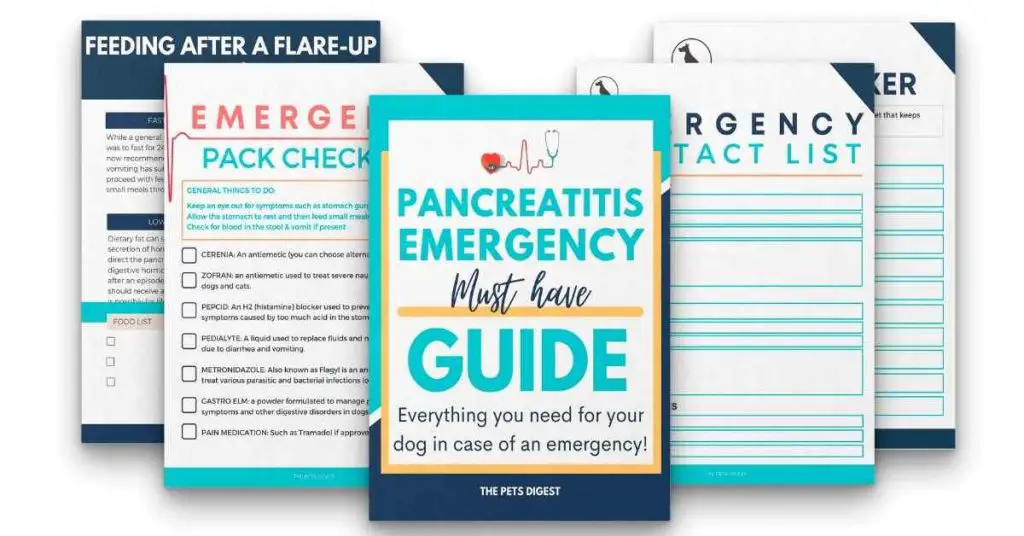
10. Reduce your dog’s activity & anxiety
Even if they want to get up and run around outside (which they probably won’t) try to keep them calm at least for the next 24 hours if possible.
Treating canine pancreatitis that becomes chronic
If your dog continues to have acute pancreatic episodes you may be dealing with chronic long-term pancreatitis. In this case, your veterinarian may want to do some things differently including sending you home with medication to have on hand. Some other things she or he may want to do include:
1. Adding digestive enzymes to your dog’s diet
Digestive enzymes can help some of the burden off of the pancreas when secreting digestive enzymes. This helps manage the inflammation that comes along with pancreatitis in dogs
2. Decrease fatty foods long term
While your dog may not like it, dogs with pancreatitis can benefit greatly from avoiding a high-fat diet as this may be the reason a dog develops pancreatitis but can also cause flare-ups in a dog that has already suffered an acute attack.
You should ensure your furry friend is eating a very healthy diet, this means decreasing or limiting human food and only feeding pet food.
Some owners choose to make their own dog food so they know exactly what is in their dog’s meals and what their dog eats. If you are interested in making your dog’s meals you can purchase our book about making healthy homemade meals at home here.

3. Have a great relationship with your veterinarian
This is in case their dog needs emergency veterinary care. A pup with chronic pancreatitis may also require blood tests regularly.
4. Keep a log of your dog’s symptoms
Keep a log of things that your dog eats, medications they take or events that happen that seem to trigger a flare-up.
5. Have medication on hand
Some dog owners opt to have medication on hand at home as well in case their dog exhibits signs of a flare-up including
- anti-nausea medication
- pancreatic enzymes
- low-fat dog food
- Pedialyte to help maintain hydration
- Pain medication for abdominal pain
Preventing pancreatitis in dogs
While it may not be possible to prevent pancreatitis in a dog that is already at a higher risk of developing it, there are some things you can do to increase their chances of never acquiring the disease.
- Know your dog’s genetics. Canine pancreatitis is common in smaller dogs. There are some dogs that seem to have a genetic predisposition for this life-threatening disease. Yorkshire terriers, miniature schnauzers, and cocker spaniels seem to be at a higher risk than most of developing pancreatitis. To read more about which dogs are at a higher risk of suffering from pancretitis read our article here.
- Keep your dog at a healthy weight. Dogs that remain at a healthy weight have a higher chance of a successful recovery
- Feed your dog properly from the beginning. As a dog owner, you are the best option that your dog has to lead a healthy and thriving life, and ensuring that they are not getting an excess of human foods or high-fat foods is critical in keeping them healthy for life.
Pancreatitis in dogs can be a complicated disease to get under control but fortunately not an impossible one!
Join our email list to get more information about keeping your dog’s gut healthy.
References
https://pubmed.ncbi.nlm.nih.gov/25586804/
References
